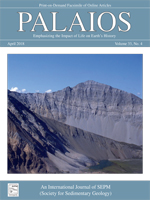The latest Neoproterozoic Ediacara biota are a collection of enigmatic soft-bodied eukaryotes that have been variously interpreted as both diploblasts and triploblasts, and which are thought to have been preserved as pyritic ‘death masks'. We perform decay experiments on sea anemones (Condylactis gigantea) and mollusks (Dolabella auricularia) under both ‘normal' (i.e., baseline) and Ediacaran-style conditions; this allows us to construct decay indices for both these organismal groups, test the influence of Ediacaran taphonomic scenarios on rates and patterns of decay, and potentially constrain the phylogenetic affinities of Ediacaran fossils. We find that in both types of organisms the most labile tissues are preferentially lost, and tissue type exerts a stronger control on preservation than overall diploblastic versus triploblastic organization. Thus, in sum, there is not a large differential of preservation between diploblastic and triploblastic organisms. Geochemical analyses of sediment from around the carcasses indicate that pyritic ‘death mask'-style preservation is dependent on the availability of Fe. Perhaps most importantly, experiments under Ediacaran-style taphonomic scenarios exhibit more rapid decay of labile tissues, such as anemone tentacles and the internal gut system of mollusks, than in baseline experiments. This finding highlights potential biases against the preservation of metazoan characters in the late Neoproterozoic, which may have influenced the interpretation of many iconic Ediacaran organisms.
How to translate text using browser tools
1 May 2018
EDIACARAN-STYLE DECAY EXPERIMENTS USING MOLLUSKS AND SEA ANEMONES
BRANDT M. GIBSON,
JAMES D. SCHIFFBAUER,
SIMON A. F. DARROCH
ACCESS THE FULL ARTICLE
It is not available for individual sale.
This article is only available to subscribers.
It is not available for individual sale.
It is not available for individual sale.

PALAIOS
Vol. 33 • No. 5
May 2018
Vol. 33 • No. 5
May 2018




